Northern Hawk Owl: Companion of the Northern Winds: The Northern Naturalist #15
Plus Responses to Brutal Winter Weather, Review of What the Robin Knows, and News and Notes
Rider of the North Winds: Northern Hawk Owl
If rare birds were easy to find, they wouldn’t usually be considered rare, which is why I was so surprised the first time I saw a Northern Hawk Owl (Surnia ulula). I was a beginning birder, and when I arrived at the location I had been given, I didn’t really expect the bird to be there. I certainly didn’t expect it to be there at midday, and I definitely didn’t expect it to be perched atop a nearby conifer, bobbing its tail and glaring down at me imperiously.

But that’s how it was for the first, and for all the other hawk owls I have seen over the years. The Northern Hawk Owl is an exception to many rules about owls. The most notable exception is that it is diurnal (it hunts during the day as a matter of course). Its name was given because, in habit and appearance, the hawk owl falls between the hawks and the owls. One of its archaic names is “Day Owl.” No need to arise at the crack of dawn to find this bird. Sleep in and head out whenever you’re ready. Don’t look before winter, though, since outside of a handful of summer nesting records, this species is a winter visitor.
Another oddity of this species is how it tends to stay put. Once a bird shows up in our region, it will often remain close to where it was originally sighted, sometimes even favoring the same tree! Years ago, one such bird got the nickname, “Kohl’s Owl,” because it spent all winter in the parking lot of a Kohl’s store, scowling down at the oblivious shoppers all season long.
In spite of the relative ease with which it can be found, the Northern Hawk Owl is a rare bird, at least in the U.S. Its range is almost entirely north of the border. Northern Minnesota and the Upper Peninsula of Michigan are the only places in the U.S. where they are seen with any regularity. Their range extends from Alaska across the far northern parts of Canada. They also live all across far northern Eurasia. They are “almost-Arctic” birds; the only other raptors that share their breeding range are Snowy Owl, Rough-legged Hawk, Peregrine Falcon, and Gyrfalcon. The northern limit for hawk owls is where they can find trees with large enough trunks to support nests.
Northern Hawk Owls are never common here, but they do irrupt in certain years, like other northern owls, when they may wander well south of their usual spots in Minnesota. In these years, probably in the wake of several years of good reproductive success and outstripping the supply of prey, the birds move south. Northern Hawk Owls eat a lot of small mammals but will also eat birds as large as grouse.
There have been a few Northern Hawk Owls reported in Northern Minnesota this year, part of the big owl irruption of this winter (see News and Notes, below)
Hawk owls are medium-sized owls, gray-brown in color (sometimes very gray, sometimes quite brown). Their backs are mottled, and their undersides are completely covered with distinct, horizontal barring. Their bodies are long and narrow in proportion. Their faces are light-colored, with yellow eyes and a pale bill. The face is surrounded by a black frame, which along with a dark smudge under the bill, gives this owl a strangely “fierce” look.
Hawk owls often perch at the very tip of a tree or on top of a post. One is not likely to confuse a hawk owl with anything else. Boreal Owls have black facial frames, but they are much smaller, with different habits. Northern Shrikes perch out in the open pumping their tails in winter, but they are songbirds with very different plumages.
Hawk owls have a bold, striped pattern on the back of their heads, which might be construed as a face at a distance. It’s possible that, for a bird that sits out in the open all day, this pattern discourages large diurnal raptors, like Northern Goshawk, from taking a shot at them.
This is the only species in the genus, Surnia, and the specific name ulula, comes from its primary vocalization on the breeding grounds. Though I have seen many hawk owls, I have only heard this once, and “uh-lu-lu . . .” isn’t a bad reproduction. You can hear it here. It’s also related to the word, ululation (a wavering, high-pitched sound resembling a howl with a trilling quality). At a concert I attended, I sat near a woman who chose to ululate instead of just clapping. I prefer the song of the Northern Hawk Owl.
Compared to some owl species, hawk owls have a rapid, direct manner of flight, which might suggest Cooper’s Hawk, which is also about the same size. When they’re perched, you’d be unlikely to confuse the two.
Hawk owls are perch hunters. Atop their tree, they scan for prey; while scanning, they often lean forward, almost to the horizontal (a most “un-owly” posture). When they strike, they tip off their perch—it can look almost accidental—and glide to the prey.
“A big, rare bird that sits still in the open at midday,” is a good description, meaning that this owl is one of the easiest rare birds to find.
Bird Responses to Brutal Winter Weather
We’ve been in the path of a polar vortex lately, as I am sure is also the case for many of you. It’s been cold (24° below) and windy (gusts up to 40 mph). Friends who know I’m a bird guy comment, “How do the birds survive this?” Here is a brief guide to some of the ways birds manage winter:
What are the conditions that are so challenging in winter?
1) SNOW covers up seeds and other plant foods, as well as hiding small prey animals. Predators can hunt through some snow, but at some point, it’s too deep.
2) COLD means there’s no cold-blooded prey available, and much higher energy expenditures are required for any activity.
3) ICE makes it hard or impossible to get at food and water.
4) DROUGHT is a challenge we may not notice, but in our part of the world, we get much less winter precipitation than in the other seasons; plus, the precipitation we do get is tied up in ice and snow—less accessible than non-frozen water.
5) DARK, SHORT DAYS mean less time for hunting and foraging for diurnal or daytime species and a longer period to roost overnight without freezing.
There are other difficulties in winter, but these are the main ones. Here are some ways birds respond to these challenges:
Avoid winter completely!
Most birds simply leave for the winter. As an example of how many species migrate, a Big Day in May in Minnesota will often yield 150 species or more. The record for the winter Sax-Zim Christmas Bird Count held here in December is 39 species.
Migration has a shockingly high cost (around half of all individual birds die in migration— from bad weather and other causes), so it has to be advantageous for survival. Otherwise, it wouldn’t persist.
A subset of migration is irruption (or invasion) when birds move a relatively short distance to find more food. This is what’s going on during the northern owl irruption years like this one (see News and Notes, below). They don’t leave winter completely behind; they just move (usually southward) to an area that has more food.
Change your diet!
Many birds shift their diets during different periods of the year. For example, Cape May Warblers (Setophaga tigrina) nest across Canada and the very northern tier of the U.S. Here, during the breeding season, they eat insects (their genus name means “moth-eater”). They migrate and winter in the West Indies. There, they switch over to drinking nectar. I have seen them nectaring here in heavy fog, when finding insects is too difficult. If a Cape May gets caught by cold weather here, they might survive by going to suet feeders or other sources of fat. Rare, late warblers often turn out to be Cape Mays.
Other birds that have diverse diets can survive even in the coldest winter by shifting their diets: American Robins are a good example. They eat worms and insects during the summer; in the winter, they have to shift to berries and fruits. They love mountain ash berries, and in the winter, we search through mountain ash trees frequented by robins, not only to see the robins, but to find the rare birds that might be with them, like Varied Thrushes.
Several groups have one species that has a more diverse diet: Tree Swallow from the swallows, Hermit Thrush from the Catharus thrushes, Eastern Phoebe from flycatchers, and Yellow-rumped Warbler from the warblers. These birds are migratory, so they’re not generally trying to over-winter, but they are the first of their groups we’ll see in spring, and the latest we see in the fall. If they get caught in an early storm, they may be able to get by.
Hide Your Food!
Some birds cache (or hide) food for the winter. Most woodpeckers do. Some, like Red-bellied Woodpeckers, cache acorns and other seeds all around their territories. Others, like Red-headed Woodpeckers, store their food in one location and then defend that location from other woodpeckers. Canada Jays coat food to cache with sticky saliva that hardens and keeps other animals from taking it.
Northern Hawk Owls (see article above) cache prey in their nest cavities. They begin the breeding season in winter, so the prey remains frozen. When it’s time to eat, they incubate it until it thaws enough to eat. Sometimes it thaws before they need it. A raptor researcher told me that he believed nothing else on earth could smell as bad as a hawk owl nest.
Cooperate and survive!
Kinglets and other small birds might cram into a tree cavity at night to share their warmth. Small birds in the forest form mixed flocks in the winter (chickadees, kinglets, nuthatches, and Downy Woodpeckers, for example). Working together makes it easier to find food, and to avoid predation—there are more eyes to see predators, and a larger group makes the odds better. Crows and ravens often form enormous roosts in winter, mainly to avoid predation by owls.
Enjoy Your Insulation!
Some birds are well-equipped for cold weather. Most Arctic birds have feathering that covers most of their bare parts, or ways to cover those parts when necessary. Many birds puff out their feathers in the coldest weather, which provides a little better insulation. Chickadees and some other birds can lower their body temperature overnight without harm.
Many birds shiver continuously in cold weather. Birds that don’t use insulation strategies must forage continuously. Chickadees are always out and always in action. They can store only a half day’s energy in their bodies, so no off-days for them!
In the winter, Ruffed Grouse feed on buds up in the canopies of trees. This makes them quite conspicuous and exposed when feeding, but they can fill up fast. They have large crops (expanded sections of their throats) that they can fill with a day’s food in half an hour. The rest of the time, if it’s cold, they’ll plunge into the snow. They can stay there until the next morning.
Even with these responses, brutal weather is still brutal. No doubt a fair number of birds are lost when the weather is so harsh; still, it always amazes me how resilient many birds are.
Review of What the Robin Knows: How Birds Reveal the Secrets of the Natural World, by Jon Young, Mariner Books, 2013.
Jon Young is a naturalist who leads outdoor experiences aimed at developing and sharpening the senses of the participants. He helps people learn how to focus and take in what’s going on around them. That is also the dominant theme of this book: you can learn to experience and understand what’s going on in the outdoors around you by training yourself to hear and see subtle patterns of sound and movement carried out by animals, especially birds.
The book is an extensive discussion of particular bird vocalizations and what they might mean, plus speculation about bird responses to humans and predators in their immediate environment. It is a personal account, with many anecdotes, which I enjoyed.
The subject is so complex that I wonder how reliable some of the conclusions are. Young readily admits, at a number of points, that what he is positing may or may not be true in all situations, but he also lays out an interesting and extensive framework for classifying sounds and what they mean that is based on his impressive experience listening to and observing birds. Much of this, however, is not backed up by formal research. Of course, conducting research that would verify any one of these points would, in itself, be complicated and daunting. So, much of the book is “anecdotal.” (Is anecdotal evidence reliable? One man says, “Yes!”)
Young recommends beginning to learn the array of vocalizations of up to five common species that are abundant in your area, spend plenty of time on the ground, and inhabit smallish breeding territories. He chose the American Robin as his first example, and it would be a good choice for almost anyone in northern North America. Reading his description of the various calls and their purposes is a great entry to the concept he calls “bird language,” that is, not simply that certain sounds belong to a species, but also trying to decipher what the sounds mean to the birds. Appendix A is a guide to activities you might try, along with questions to be asking while you do the activities.
There is a certain romanticism about the book. Young, no doubt correctly, says that indigenous people were more in touch with these things than we moderns are. He gives several activities aimed at changing the way we enter wild spaces, for example, under the assumption that we are often just plowing mindlessly into the forest. I’m not sure the divide between people of the past and us is quite as wide as he implies, but the activities are fun and interesting nonetheless.
If you have spent a lot of time in the woods, some bird language will come to you naturally. I am often aware that the birds are signaling the presence of a predator before I see the predator. Young’s book takes that experience to a much deeper and broader level. If you are interested in that kind of experience, I recommend the book.
The audio recordings referenced in the book are apparently no longer available online. They’re not essential to understanding the book. Young’s website is here.
News and Notes
A Big Owl Year
We’re in a full-fledged owl irruption winter. So far, dozens of Great Gray Owls, Snowy Owls, and Boreal Owls have been seen, mostly within a few miles of the north shore of Lake Superior, but also further from the lake, including in the Sax-Zim Bog. The number of Boreal Owls is especially noteworthy. When not in a situation like this, this is among the most difficult regular bird species to find in Minnesota; for the past couple of weeks, many have been found.
Irruptions like this are believed to follow several years of increasing population numbers up north, which finally outstrips the food supply. This may follow the boom-and-bust cycles of preferred prey, like lemmings or gallinaceous (chicken family) birds; and it is likely also influenced by weather conditions to our north. For example, if the snow crust develops heavy ice on top, making it too difficult for owls to punch through when hunting, then more owls will head south.
Many birders will not reveal the locations of owls they’ve found, fearing that people will stress the owl by getting too close; so if you come to look, you’ll likely just need to drive along back roads, looking for birds, or for clots of cars where one has been found!
My Big Year Update
It’s been a slow couple of weeks in my quest to see as many bird species in St. Louis County, Minnesota as I can this year. Despite multiple attempts, I still need Snowy Owl for the county. I’ve just been in the wrong place at the wrong time. My best recent bird was Red Crossbill. Some flew into the pine trees near my house. I picked up a Northern Shrike about a mile from our place, on Minnesota Point. Things will be slow now for awhile. Among “gotta find ‘em in winter” birds, in addition to Snowy Owl, I still need Pine Grosbeak, and Bohemian Waxwing. I’m up to 50.
No More Ships for the Winter
The shipping season on Lake Superior ended this week. The date is determined by when the Soo Locks, the only water path from Lake Superior into the lower Great Lakes, closes.
Someone Else Likes Gardener’s World
Last issue, I reviewed the BBC show, Gardener’s World. Since then I found another appreciation of the show in Orion Magazine: “Melancholy Eyes: Finding Comfort in British Gardening Shows After a Devastating Loss,” by Caleb Dean, November 14, 2024.
Thank you, dear reader, for reading until the end. I wish you warmth and as much time outdoors as you want!

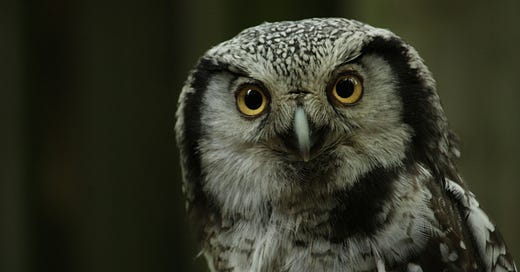



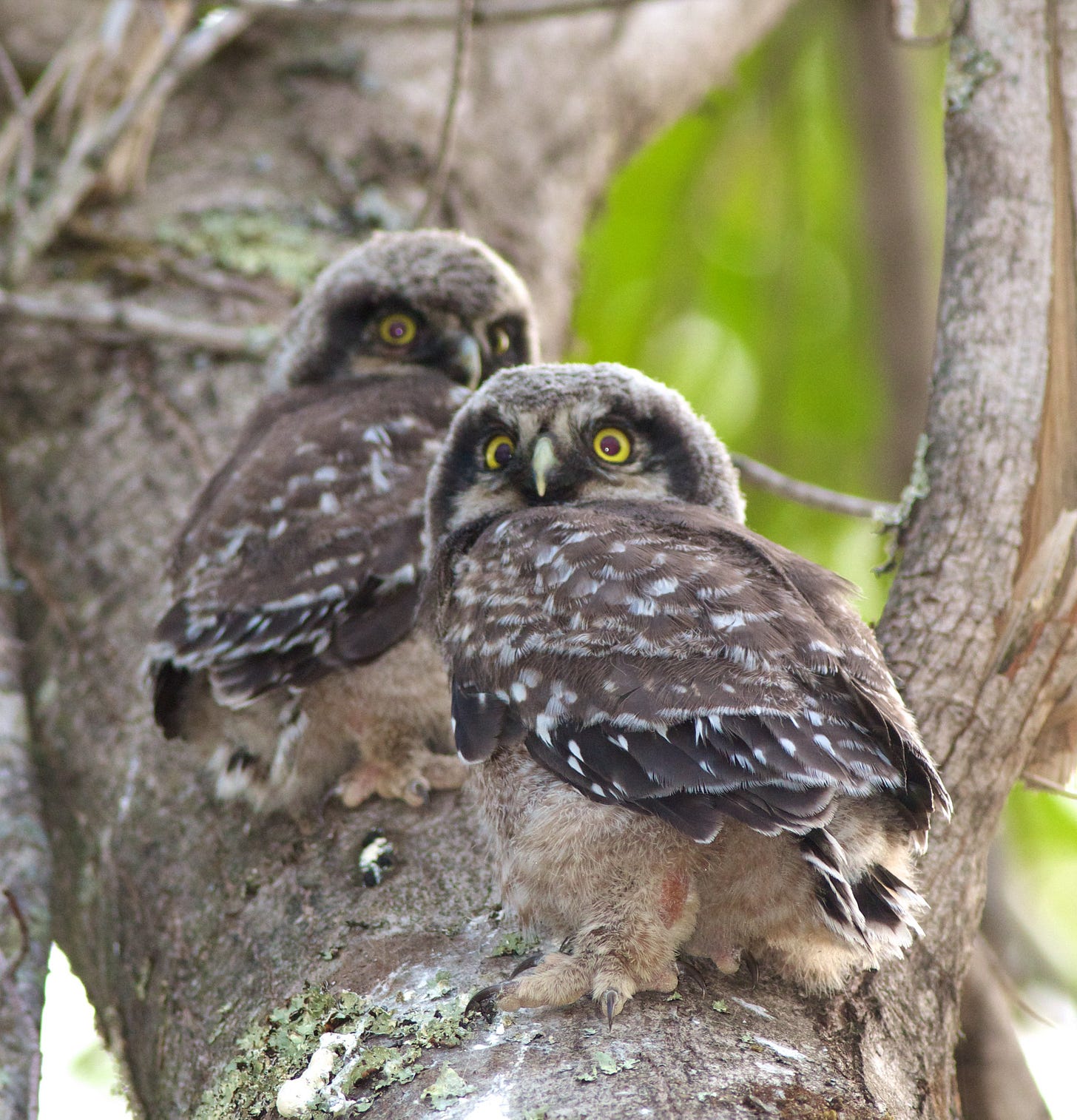

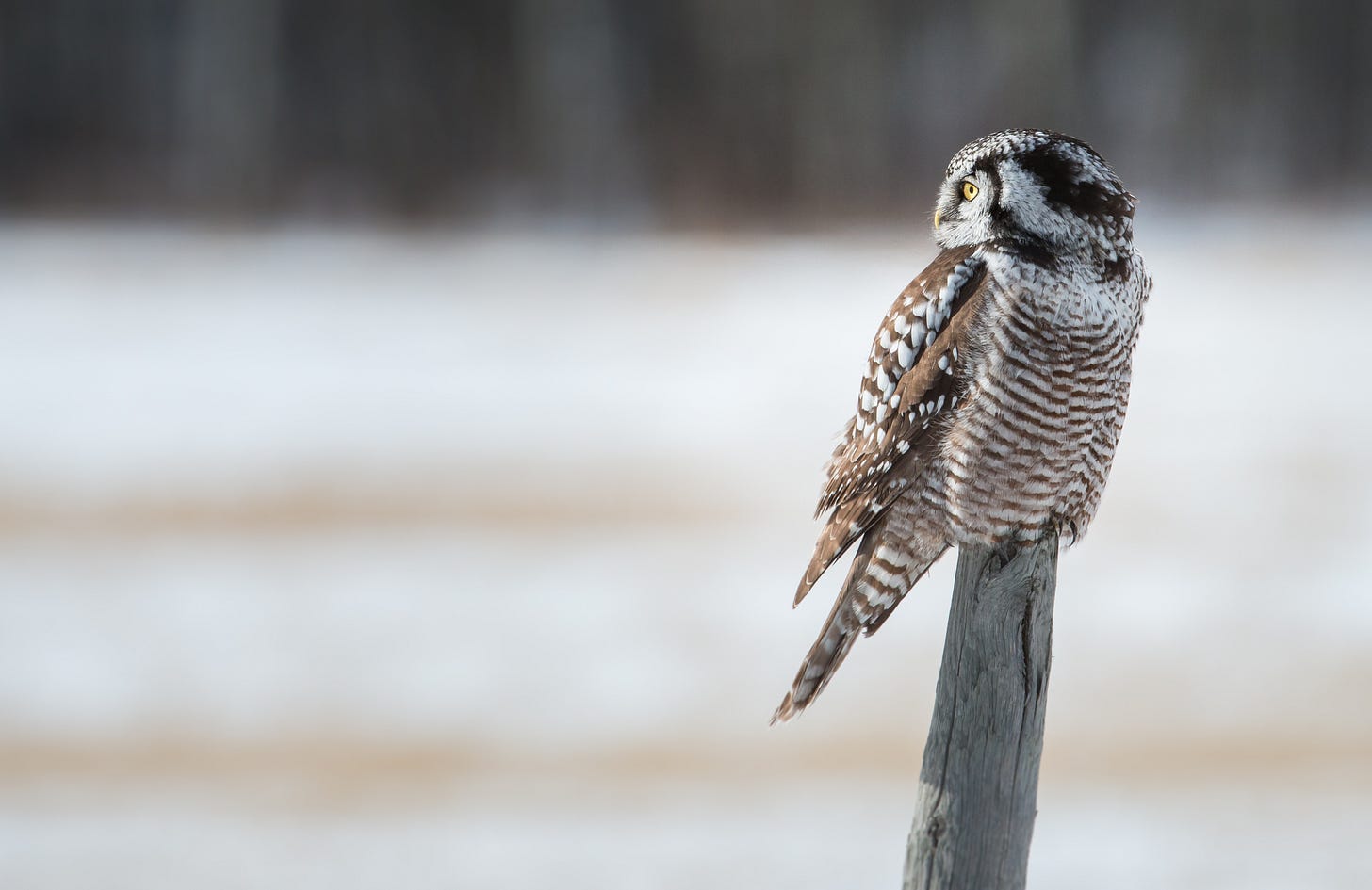

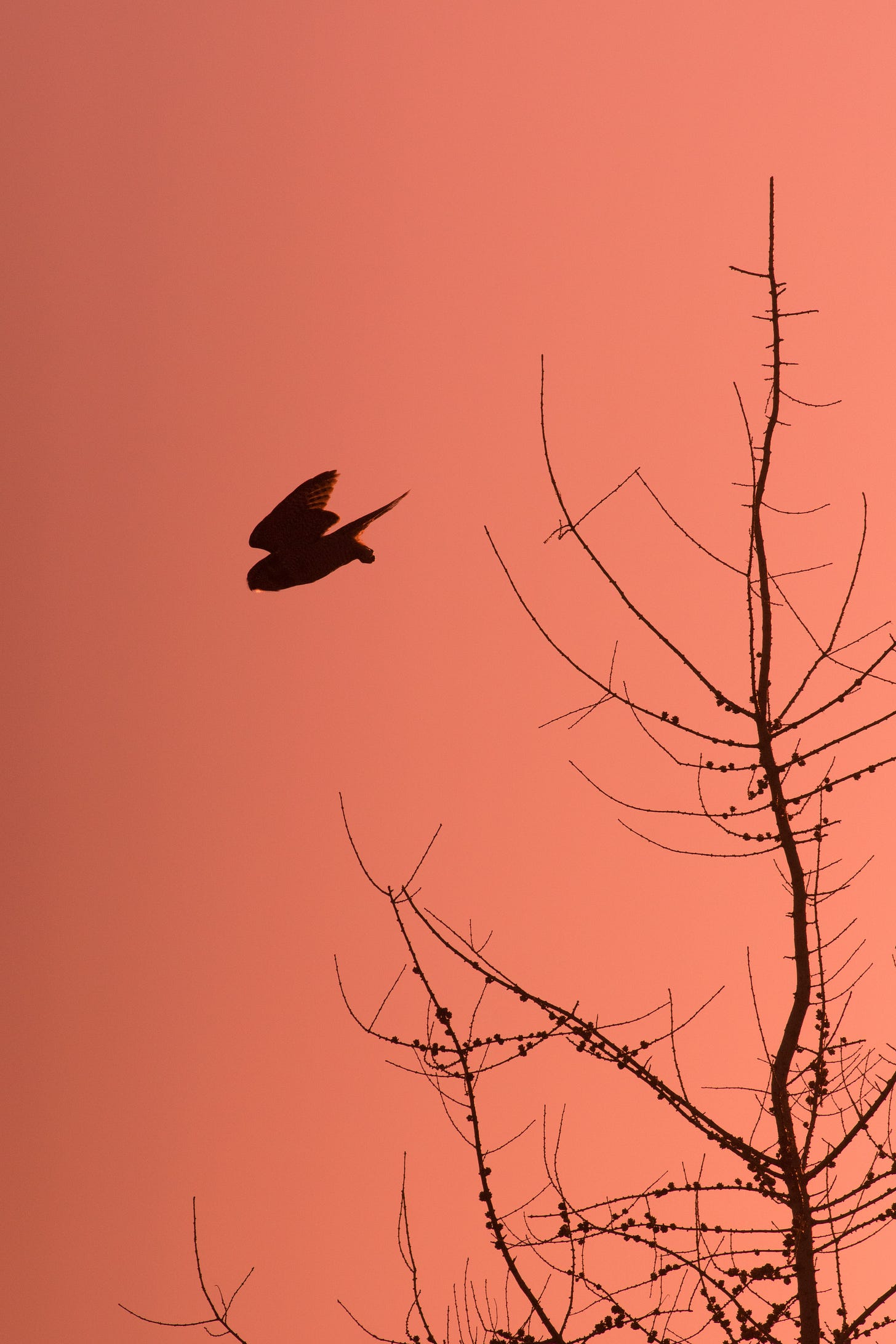
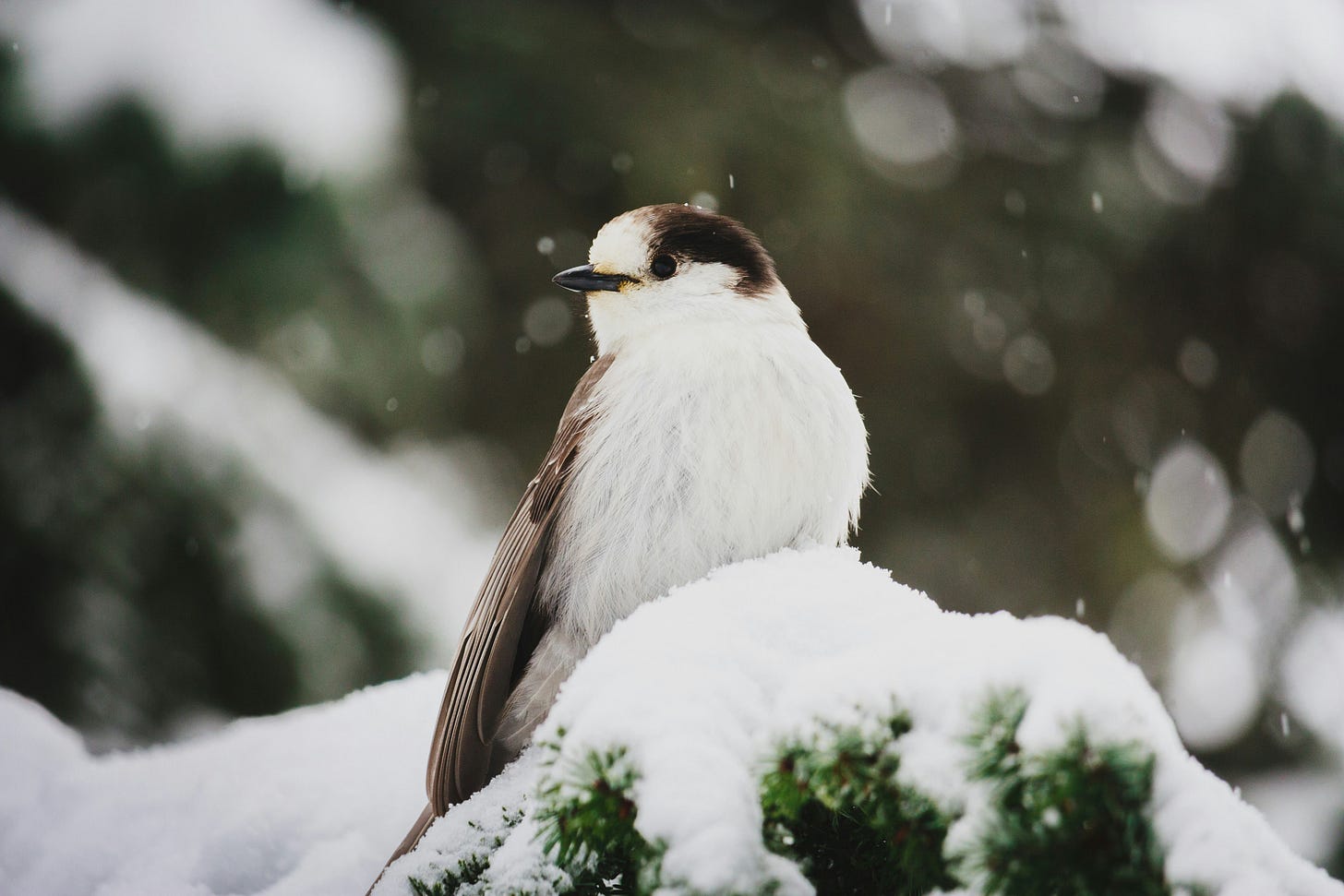





I always think of owls being nighttime birds, so this was really interesting to learn! I'm going up to the UP in a few weeks, so now I know to keep my eyes out for Northern Hawk Owls during the day. I have low confidence that I'll be observant enough to see them even if they are there, but it's nice to have a goal!
Thank you. I needed this to balance all the bad news. I’ve been visiting Finland lately and they have these same northern owls. A reminder that the birds don’t see borders.